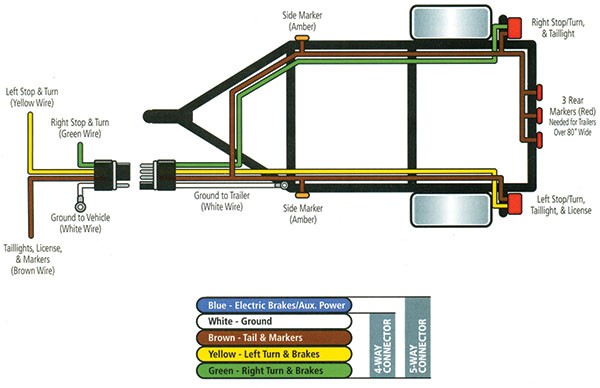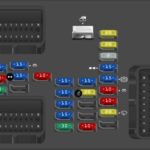Understanding your trailer wiring is crucial for safe towing. This guide focuses on the 4 Prong Trailer Wiring Diagram, a common standard for basic trailers. We’ll cover its functions, color codes, and common troubleshooting issues.
A 4-prong trailer connector, often found on boat and utility trailers, manages three essential lighting functions: running lights, turn signals, and brake lights. Each wire within the connector corresponds to a specific function and color:
- Brown Wire: Right Turn Signal and Brake Light
- Yellow Wire: Left Turn Signal and Brake Light
- Green Wire: Right Running Light and Tail Light
- White Wire: Ground
It’s important to note that both flat and round 4-way connectors exist. While the shape differs, the wiring configuration and color codes remain consistent.
While 4-way connectors suffice for basic trailers, larger trailers with additional features like electric brakes or auxiliary power require more complex wiring systems, such as 5, 6, or 7-way connectors. These connectors incorporate extra wires for functions beyond basic lighting. For instance, a 5-way connector often includes a wire for surge brake activation. Similarly, 6 and 7-way connectors accommodate electric brakes, 12V power, and backup lights.
If your tow vehicle uses a 7-way connector, adapters are readily available to connect to a 4-way trailer. However, remember that using an adapter won’t magically add functionalities not present in the 4-way system.
Always verify your trailer’s wiring before connecting it to your vehicle. Never assume the wiring adheres to standard conventions. Consulting your trailer and vehicle owner’s manuals is recommended for accurate wiring information. Incorrect wiring can lead to malfunctioning lights, posing safety risks on the road. If you’re unsure about your trailer’s wiring, consult a qualified technician.


